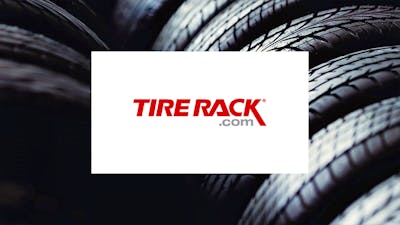How Tires For Your EV Are Different
There are three key differences between tires for an electric vehicle and tires for an equivalent gasoline or diesel-powered vehicle. Those differences are weight, efficiency, and traction. Each plays a role in how a tire is designed and formulated for vehicles on the road. Let’s explore.
Gasoline and diesel vehicles are collectively called internal combustion engine (ICE) vehicles. Battery-electric vehicles are usually referred to as being an electric vehicle (EV).
Get the Best Deals on Tires
Weight
The biggest difference between an ICE vehicle and an EV is weight. An EV will weigh 30 percent more, on average, than its ICE equivalent vehicle. It’s not just the camera. This extra weight comes from the batteries and it means that tires will need to bear the added weight plus account for the momentum and stopping requirements. The heavier the vehicle, the more traction is needed to resist sliding in maneuvers and when stopping.
In order to improve weight capability and traction for a heavier vehicle, tire manufacturers usually turn to wider tires with higher inflation pressure. This adds more rubber to the road and presses it more evenly across that road surface. Tire makers also add more stability to the tire’s side walls, which bear most of the weight–especially during maneuvering. Most of the time, this is done by adding “plies” to the tire. That internal structure that gives shape to the tire itself and which gives rigidity to the rubber compounds that make up the bulk of a tire.
Traditionally, an increase in ply count meant an increase in stability under heavier loads. This was usually a factor ignored by the consumer except when purchasing tires for a larger vehicle such as a pickup truck or full-sized sport utility vehicle.
Anyone remember the “ply count wars” of the 1980s when manufacturers were touting the number or type of plies used in their tires versus the competition’s clearly inferior options? I recall it being vitally important that my truck’s tires have more plies than my neighbor’s did. Okay, maybe it’s just me.
For electric vehicles, tire designers changed that “plies are king” tradition a bit. Not because it isn’t a good solution for weight handling, but because it caused other problems that traditional car buyers would not want to appear in their new EV. Namely road noise and losses in efficiency. We’ll get to road noise in a moment. First, let’s talk efficiency.
Efficiency
One of the greatest selling points for electric cars is efficiency over traditional ICE choices. And range is a huge factor in whether an EV will sell well. To get the high ranges promised, automakers asked tire suppliers to come up with tires with little rolling resistance.
Called low-rolling resistance (LRR) tires, these tires are often found on hybrids and electrics and are now making their way to many ICE vehicles as well. They offer less resistance when the tire is turning, thus adding more efficiency overall. The balance point between LRR and grip, however, is where tire designers have to dip into the arcane world of physics. Finding that perfect spot is not easy, which is why different tires are often recommended for different powertrains and vehicle weights.
A Toyota Prius, for example, weighs a couple of hundred pounds less than a Toyota Prius Prime (the plug-in hybrid version with a bigger battery). That 200 or so pounds makes a big difference in handling characteristics for the car. Which is why the standard Prius model comes with different LRR tires than does the Prius Prime model.
So the LRR needs of an EV require another type of balance, since the batteries are even heavier. The added weight of an EV means more efficiency loss in rolling resistance. That requires its own formulation to find the sweet spot between stability and LRR. But that’s not all. Tire makers also have to account for the way an EV outputs its power.
Traction
Another big difference between electric vehicles and their internal combustion counterparts is power delivery. Unlike combustion engines, which build up power as they increase rotations, electric motors can deliver their full power from the moment they begin to rotate. This means the full torque (twisting power) of the motor is immediately available to the wheel and the tire mounted on it. If the tire is not formulated correctly, most of that power will result in traction loss and a spinout.
Contrary to what Hollywood likes to project, most of us don’t actually do burnouts every time we leave the parking lot or pull away from a stoplight. As much fun as that might be, it’s a waste of tire rubber and a public nuisance. Even if it does look wicked awesome.
So EV tires must be “stickier” than their ICE equivalents because there is more power being delivered to the ground from a standstill. Stickiness means more rolling resistance. Which is, as we’ve discussed, bad for efficiency. The solution is a combination of changing the balance between stickiness and LRR and adding a sort of “launch control” mechanism to the car itself.
Most electric vehicles limit the amount of power the motor receives when a vehicle is launching from zero miles per hour or at low MPH. Then it adds power as traction dictates. Integrating the electric motor’s controls to traction control systems adds a lot of safety to the vehicle’s operation and helps prevent instant burnouts (and the resulting smoke and potential for fire) when the driver punches it to leave a stop sign or light. This also allows better efficiency all the way around as the motor won’t waste energy and the tires can have a higher LRR to stickiness ratio. A win-win.
Road Noise
Finally, we come to road noise. The third biggest difference between most ICE vehicles and an EV is noise levels. Especially inside the car.
Most of today’s road noise is caused by the tires on the roadway itself, vibrating frequencies into the car’s cabin for us to hear. Even more noise is added with engines and transmissions as the mechanicals do their thing. This click and clack has changed over the years from the chuggity-chuggity of a Model T engine, which Henry Ford referred to when changing the timing and fuel inputs to improve operation. Hence coining the phrase “tuning” when referring to an engine. To the smoother, less mechanical sound of an engine purring today. Many small engines in smaller cars, in fact, make so little noise that they are almost totally silent at idle.
An EV is completely silent almost all of the time. Except for that weird space-age noise most of them make to alert pedestrians at low speeds. The noises created at speed are usually at a frequency beyond what humans can hear or are high enough to be dissipated before reaching the cabin. Tire noise, however, increases with vehicle weight. And EVs are heavier.
To help with this, manufacturers have a few solutions. More padding between the tire and the passenger cabin, in the form of soundproofing on the vehicle itself, can help. But this adds weight and complexity. Which lowers efficiency. So to reduce the amount of padding needed, the noise should be reduced at its source. Here come tire manufacturers.
The best way to reduce tire noise is to add more air into the tire. More air means more “cushion” for the tire’s noise to travel into. It also makes a heavier car more comfortable. So in addition to designing EV tires to be able to bear more weight and to add more efficiency, tire makers also add more air by designing the tires to work at higher pressures. Most EV tires are 10-20 pounds higher in pounds per square inch (PSI) than are equivalent ICE tires.
Which Tire Is Best for My EV?
Looking at an EV’s tires versus an ICE vehicle’s tires in the parking lot probably won’t result in a lot of obvious differences. The EV tire is probably going to be a bit wider, but the tread and overall appearance is probably about the same. A closer look at markings might reveal some differences. Most EV tires, for example, will be marked “HL” for “high-load capacity.” They’ll also have higher inflation numbers. Most will have a smaller sidewall as well, as this reduces the amount of “shimmy” in the sidewall for stiffer performance.
For more information on finding the right tire for your electric vehicle, we’ve produced a direct comparison list of various options and our expert opinions here, Best Tires for Your EV.
Read more on the Best Tires in the Industry here.













